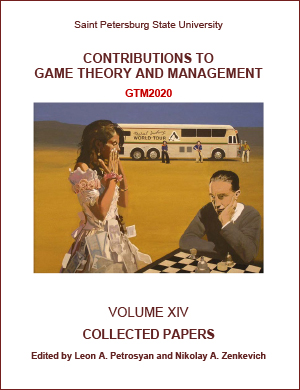About Construction of Realizability Arias of Salesman Strategies in Dynamic Salesmen Problem
DOI:
https://doi.org/10.21638/11701/spbu31.2021.10Abstract
The dynamic travelling salesman problem, where we assume that all objects can move with constant velocity, is considered. To solve this NPhard problem we use a game-theoretic approach and well-known solution concepts of pursuit games. We identify the realizability areas of salesman strategies depending on the initial positions of customers and their velocities. We present different cases of realizability areas of salesman strategies constructing in Python program with several numbers of customers.
Keywords:
dynamic travelling salesman problem, non-zero sum game, Nash equilibrium, realizability areas
Downloads
References
Downloads
Published
How to Cite
Issue
Section
License
Articles of "Contributions to Game Theory and Management" are open access distributed under the terms of the License Agreement with Saint Petersburg State University, which permits to the authors unrestricted distribution and self-archiving free of charge.




